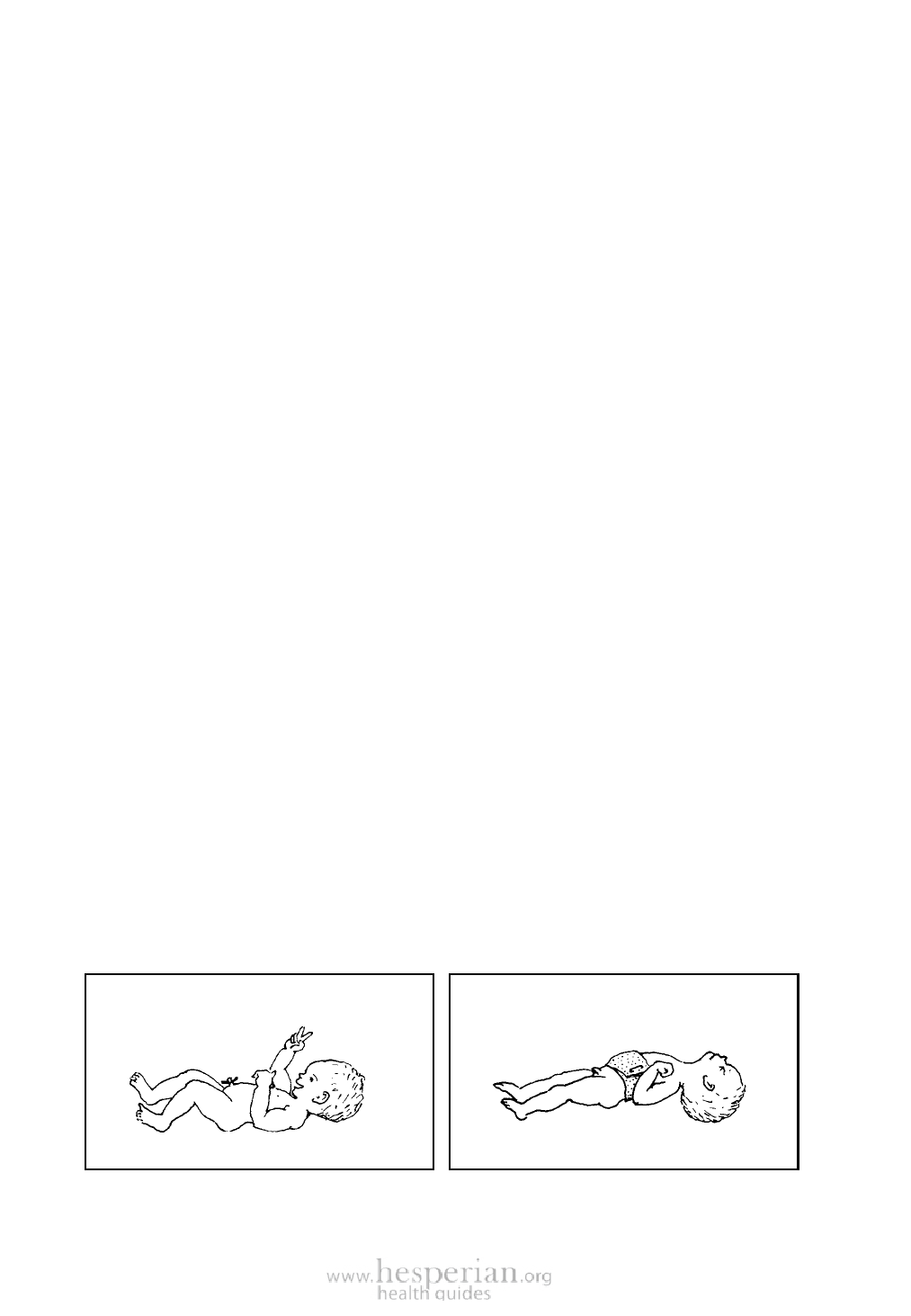
184 Where There Is No Doctor 2011
What to do when there are signs of tetanus: (continued)
♦ Inject 1 million units of procaine penicillin at once and repeat every 12 hours
(p. 352). (For newborn babies crystalline penicillin is better.) If there is no
penicillin, use another antibiotic, like tetracycline.
♦ If you can get it, inject 5,000 units of Human Immune Globulin or 40,000 to
50,000 units of Tetanus Antitoxin. Be sure to follow all the precautions (see p. 70
and 388). Human Immune Globulin has less risk of severe allergic reaction, but
may be more expensive and harder to obtain.
♦ As long as the person can swallow, give nutritious liquids in frequent small sips.
♦ To control convulsions, give diazepam (Valium) by mouth or in the rectum (for
dosages see p. 389 and 390).
♦ Touch and move the person as little as possible. Avoid noise and bright light.
♦ If necessary, use a catheter (rubber tube) connected to a syringe to suck the
mucus from the nose and throat. This helps clear the airway.
♦ For the newborn with tetanus, if possible, have a health worker or doctor put in a
nose-to-stomach tube and feed the baby the mother’s breast milk. This provides
needed nutrition and fights infection.
How to prevent tetanus:
Even in the best hospitals, half the people with tetanus die. It is much easier to
prevent tetanus than to treat it.
♦ Vaccination: This is the surest protection against tetanus. Both children and
adults should be vaccinated. Vaccinate your whole family at the nearest health
center (see p. 147). For complete protection, the vaccination should be repeated
once every 10 years. Vaccinating women against tetanus each time they are
pregnant will prevent tetanus in newborn infants (see p. 250).
♦ When you have a wound, especially a dirty or deep wound, clean and take care
of it in the manner described on page 89.
♦ If the wound is very big, deep, or dirty, seek medical help. If you have not been
vaccinated against tetanus, take penicillin. Also consider getting an injection of
an antitoxin for tetanus (see p. 388).
♦ In newborn babies, cleanliness is very important to prevent tetanus. The
instrument used to cut the umbilical cord should be sterilized (p. 262); the cord
should be cut short, and the umbilical area kept clean and dry.
THIS BABY’S CORD WAS CUT
SHORT, KEPT DRY, AND LEFT OPEN
TO THE AIR.
THIS BABY’S CORD WAS LEFT
LONG, KEPT TIGHTLY COVERED,
AND NOT KEPT DRY.
HE STAYED HEALTHY.
HE DIED OF TETANUS.